Mardi Himal Trek - 8 Days Overview
Forget the Everest crowds and cookie-cutter Annapurna Circuit itineraries — the Mardi Himal Trek is the sneaky little 8-day Himalayan escape that somehow still flies under most tourists’ radar. Tucked into the shadow of Machhapuchhre (yeah, that epic Fish Tail peak), this trek punches way above its weight in views, drama, and “wait, how is this not famous yet?” moments. Winding through cloud-wrapped forests, sketchy ridge trails, and high-altitude camps that feel like they’re floating above the Annapurna range, this one’s for travelers who like their hikes a little wild and a lot less Instagrammed. And yep — it all goes down in the heart of Nepal’s Annapurna region. No helicopters. No five-star hotels. Just raw trekking, tea houses, and a front-row seat to the Himalayas.
The Mardi Himal Trek ain’t just another pretty walk in the Annapurna region — it’s a full-on emotional rollercoaster wrapped in clouds and rhododendron trees. Starting from the lush mid-hills around Kande and winding all the way up to Mardi High Camp at nearly 3,580 meters, this 8-day journey throws every terrain trick in the book. Mossy forest trails? Check. Narrow ridgelines with nothing but clouds on both sides? Hell yeah. And then — boom — out of nowhere, those savage Himalayan giants show up: Machhapuchhre, Annapurna South, Hiunchuli, and even a cheeky glimpse of Dhaulagiri on clear days. The altitude kicks in just when the views start stealing breath anyway. Expect slippery rocks, freezing wind near the top, and that weird grin that shows up around Viewpoint — the kind only mountain magic can slap onto a tired face.
This trek starts in full jungle mode — we’re talking dense rhododendron forests so thick they feel like they’re breathing. Early days around Deurali and Forest Camp are straight-up green tunnels, with mossy trees, hanging vines, and the occasional rustle that might be a langur monkey or just the wind playing games. The biodiversity here? Wild. Think: fluttering Himalayan monals (Nepal’s punk rock national bird), barking deer vanishing into undergrowth, and enough birdcalls to make a jungle Spotify playlist. As the trail climbs, the vegetation zones shift hard — ferns and orchids give way to gnarled alpine shrubs, then nothing but scrubby grass and lichen-covered rocks near High Camp. By the time Viewpoint rolls around, it’s pure high-altitude wilderness — maybe a snowcock flapping around if the mountain gods are feeling generous. This route’s an eco-diversity buffet, and you’ll feel the shift in every breath.
Route Overview Of Mardi Himal Trek
It all kicks off in Kathmandu, the chaotic launchpad where prayer flags flap above traffic jams and dal bhat becomes a religion. After a quick hop to Pokhara, things mellow out fast — lakeside chill, mountain reflections, and last-minute gear panic before hitting the trail. The actual trek begins from Kande, but don’t let that gentle start fool anyone. The climb up to Pitam Deurali already teases what’s coming: thick forests, stone steps, and first hints of the Annapurna beasts looming behind the hills.
From there, the trail slips deeper into the green. Think dense rhododendron tunnels, slick moss-covered rocks, and a silence that hits different — welcome to Low Camp, perched around 3,050 meters. Things start getting real between here and High Camp. The forest thins, the air sharpens, and suddenly it’s all ridgelines and raw altitude. Every step up to High Camp (around 3,580 meters) feels like a punch to the lungs, but damn — those views of Machhapuchhre exploding into the sky? Unreal.
Then comes the pre-dawn push to Mardi Himal Base Camp — a rugged, exposed climb that feels more alpine scramble than forest hike. The altitude hits, the wind howls, and the ridge narrows like it’s testing nerve and knees. But that summit stretch? Unreal. Full panorama: Annapurna South, Hiunchuli, Machhapuchhre, even a cheeky sighting of Dhaulagiri if the sky’s clear. Cameras can’t do it justice.
Instead of backtracking, the route drops down the quiet side via Siding Village — all terraced fields, sleepy farms, and the kind of hospitality only found far from tourist trails. It’s the perfect come-down after the high. From Siding, it’s a mellow descent to Lumle, where wheels take over again en route to Pokhara’s creature comforts. The loop closes back in Kathmandu — dusty, loud, and weirdly comforting after so much quiet. But something stays up there on that ridge — maybe part of the soul, or maybe just sore knees.
Why Mardi Hits Different: Raw Highlights from the Ridge
This trek’s got no chill — in the best way possible. One minute it’s deep jungle, next it’s sky above clouds and wind punching through your jacket. The Mardi Himal Trek doesn’t waste time — it just keeps climbing, keeps shocking. Here’s what makes this trail punch harder than its 8-day timeline should allow:
- Getting slapped in the face (emotionally) by Machhapuchhre from High Camp — it’s not a view, it’s a presence. That peak isn’t in the background, it’s right there, staring back.
- Pushing up to Mardi Himal Base Camp at 4,500m — ridge trail turns into full-on space walk. Legs screaming, wind howling, heart doing whatever it wants. But the view? Illegal levels of beauty.
- Dripping through rhododendron forests that look like a jungle from a dream. Trees covered in moss, roots tripping you on purpose, birds shrieking like something’s watching.
- Not seeing crowds. Seriously. This isn’t the Everest parade. Just the trail, the sky, and a few smart trekkers who got the memo early.
- Teahouses that barely cling to cliffs — basic as hell, but somehow serve the best plate of dal bhat after a day of altitude punishment.
- Waking up above the clouds. No metaphor. Literal cloud oceans with Annapurna South popping out like a god just clocked in for the shift.
- Dropping down through Siding Village — chickens, cornfields, no tourists. Feels like falling back into the real world after living in some mountain fever dream.
Seasonal Guide For Trek To Mardi Himal
Alright, listen up — the Mardi Himal Trek has moods, and those moods depend on the season you pick. The sweet spots? Autumn and spring, no contest. Autumn (that’s September to November) is basically the Himalayas’ version of a mic drop — the monsoon washes all the dirt and dust off, skies clear out like someone scrubbed ‘em with mountain soap, and suddenly the whole Annapurna range is flexing like it just got a new suit. Trails are solid, the air bites just enough to remind you you’re alive, and the rhododendrons are still chillin’ before their spring party.
Spring (March to May) is where the forests throw a wild flower rave — rhododendrons explode in colors that don’t exist in real life, and the weather warms up just enough so you’re not turning into a popsicle on the trail. Visibility can sometimes play peek-a-boo with a bit of haze or random rain showers, but the trade-off is the kind of green that hits different after winter’s dead gray.
Winter? Cold as a yak’s backside. Nights dip way below freezing once the trek hits the higher camps, and snow isn’t just a pretty picture — it can shut parts of the trail or turn it into a slippery nightmare. But if frostbite and solitude are your thing, this is the season to go rogue. Just don’t forget your heavy jacket and a thermos full of whatever gets you through.
Monsoon trekking (June to August) is basically asking for trouble unless the mudslides and constant rain are your jam. Trails turn into a mud wrestling ring, landslides show up uninvited, and views? Ha, good luck with that. The jungle turns lush green but also basically shuts down on the whole “safe hiking” front.
Pro tip: Don’t mess with the monsoon unless you like hiking in soup.
Teahouses, Food, and Lodging on the Mardi Himal Trail
Food and accommodation on the Mardi Himal Trek aren’t five-star hotel fancy, but don’t let that fool anyone — they’re exactly what a high-altitude trek needs: simple, hearty, and straight-up comforting. The whole route runs on teahouse trekking Nepal style, which means basic lodges scattered at major stops like Pitam Deurali, Low Camp, and High Camp. Expect wooden rooms with thin mattresses, blankets that have definitely seen better days, and the occasional surprise cold shower if the water gods aren’t smiling.
When it comes to food, it’s mostly classic Nepalese staples — dal bhat (rice, lentils, and veggies) is king here and for good reason. It’s carb-heavy fuel for the long days, and these teahouses serve it hot and generous. Aside from dal bhat, menus usually include simple soups, noodles, and momos (dumplings), which can be a welcome change after days of hiking. Most places have started adding some international dishes like pasta or omelets, but don’t expect much variety — the higher you go, the more limited things get because everything is carried up by porters or mules.
Hygiene standards vary but generally, these teahouses are kept as clean as conditions allow. Bathrooms often have squat toilets, and water is precious, so it’s a good idea to pack hand sanitizer and baby wipes just in case. It’s not luxury, but it’s cozy enough to crash hard after a brutal day on the trail.
At lower altitudes like Pitam Deurali, expect a bit more comfort — some lodges even have Wi-Fi and hot showers (for a price). Closer to High Camp and Mardi Base Camp, things get rougher — no Wi-Fi, no showers, and thin walls that let in every mountain howl and yak bell. But that’s part of the charm: waking up above the clouds with the Himalayas staring you down beats any five-star fluff.
Permits That Actually Matter Before You Hit Mardi Himal
Listen, before hitting the trail, paperwork ain’t optional. The Mardi Himal Trek demands two things — and skipping either is just begging for trouble.
- First, the Annapurna Conservation Area Permit (ACAP). It’s that official badge letting you wander the Annapurna zone, including Mardi Himal. Can grab it in Kathmandu or Pokhara — show up, pay about 3,000 NPR (yeah, that’s roughly 25 bucks), sign some forms, done. Easy, but don’t think it’s some souvenir. No ACAP? No trekking.
- Second, the TIMS card — Trekker’s Information Management System. It’s basically Nepal’s way of keeping tabs on who’s on the trails. Same deal — Kathmandu or Pokhara. Around 2,000 NPR (17 bucks-ish). If rolling with a guide or company, they usually sort this out. If flying solo, this is your pit stop.
- No other weird permits or secret passes needed here. Unlike the Manaslu or Everest regions, Mardi Himal keeps it chill. But real talk? Hiring a local guide still saves your butt and makes the whole thing less of a headache.
- Heads up: the money isn’t going to some sketchy pocket. It’s for conservation and helping the locals survive up there. So pay up and feel less guilty about that extra momo plate.
- Pro tip — don’t leave this till last minute. Sorting permits before you start cuts stress and keeps the vibes right.
How Much Hustle Does Mardi Himal Really Demand?
Let’s cut to the chase — Mardi Himal Trek isn’t a stroll in the park, but it’s not Everest-level insanity either. It’s that sweet spot where the legs get worked, lungs get tested, and the altitude starts whispering (or sometimes yelling) in your ear.
Expect daily hikes between 5 to 7 hours, mostly uphill chunks with some sharp climbs that’ll leave calves screaming and lungs begging for mercy — especially hitting High Camp and the push to Mardi Himal Base Camp at around 4,500 meters. The terrain shifts from smooth forest trails to rocky, sometimes slippery ridgelines that demand solid footing and a decent head for heights. Falling on your face isn’t out of the question, so watch those steps.
Altitude is the real boss here. You’ll be crossing the 3,000-meter mark early on, which means acclimatization is crucial. No rushing allowed unless fancy altitude sickness and emergency choppers are part of your plan. Those dizzy spells, headaches, and nausea? Yeah, they’re not fun — but manageable if you take it slow, hydrate, and listen to your body. Bring some ginger or garlic soup for the rescue.
Fitness-wise, cardio and leg strength are king. If you’ve been hitting the gym or pounding pavement with hills, you’re on the right track. Strength training helps too — think squats, lunges, and core work to keep balance on tricky paths. If the idea of 7-hour uphill days sounds like a horror movie, maybe pack some extra patience or start prepping early with some serious walking and stair climbs.
Mardi Himal rewards effort but doesn’t discriminate. A reasonable fitness level and respect for altitude get most people through. No need to be a super-athlete, just don’t show up expecting a walk in the Kathmandu park.
Looking for a more in-depth journey? Explore our enhanced Mardi Himal Trek – Annapurna’s Hidden Gem Adventure , offering richer insights and carefully selected highlights for a truly immersive experience.
🧭Alternative Tours & Packages
- Mardi Himal Helicopter Tour – 1hr Scenic Adventure
A quick and scenic alternative for those short on time, this helicopter tour offers sweeping aerial views of the Mardi Himal and surrounding peaks without the need for trekking.
- Ghorepani Poon Hill Trek
A short yet rewarding trek known for its stunning sunrise views over the Annapurna and Dhaulagiri ranges, ideal for beginners or those on a tight schedule.
- Annapurna Base Camp Trek
A classic Himalayan adventure leading to the heart of the Annapurna Sanctuary, this trek offers dramatic landscapes, glacier views, and rich cultural encounters.
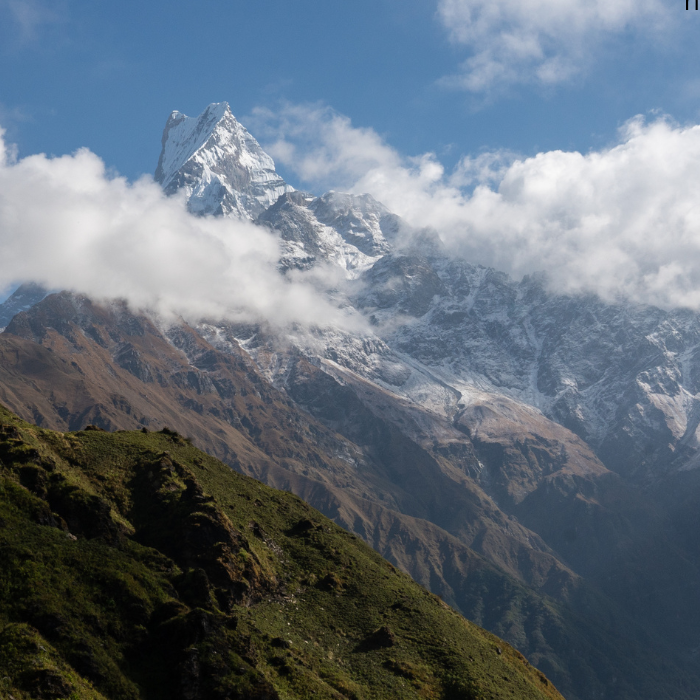
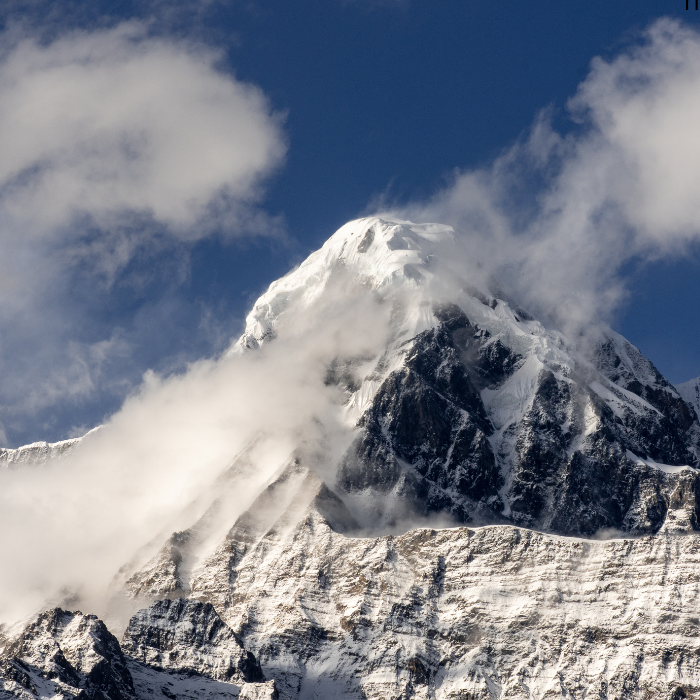
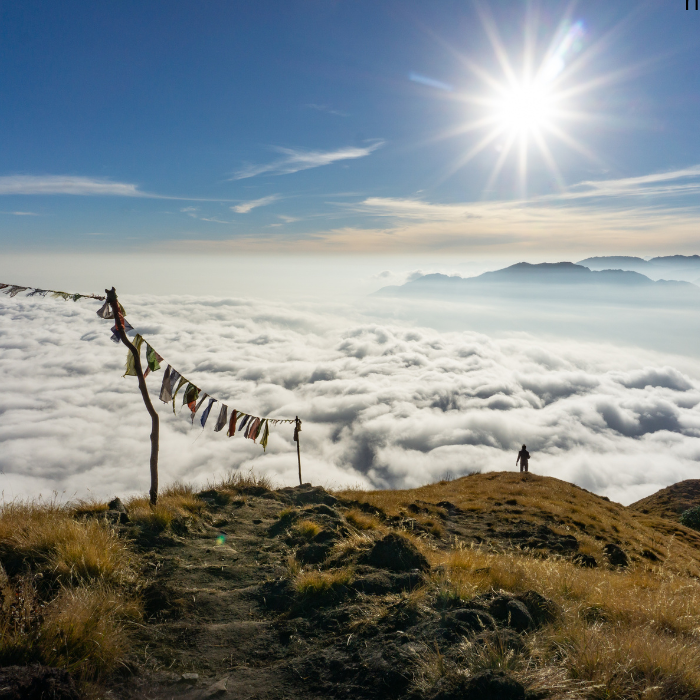
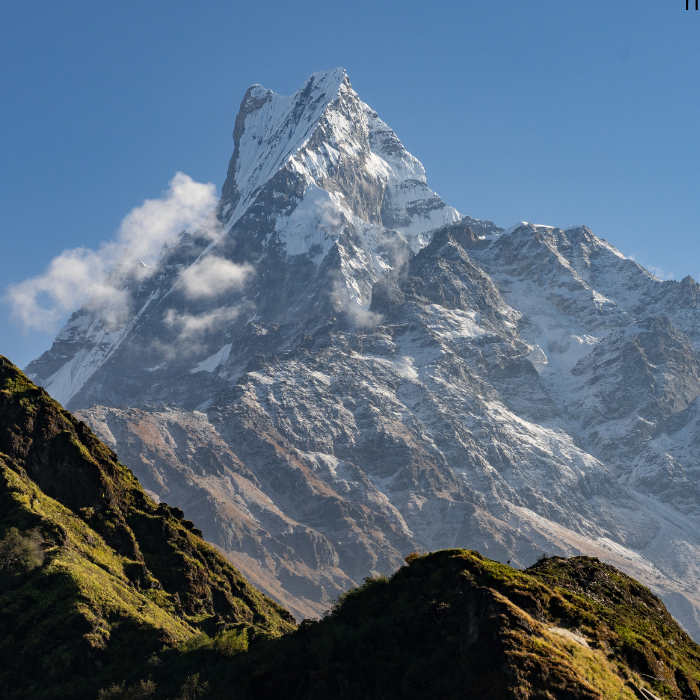
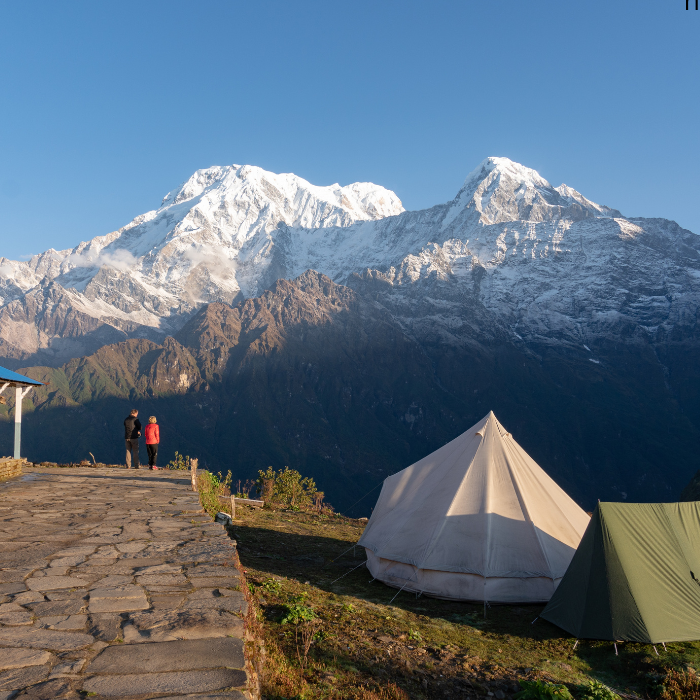
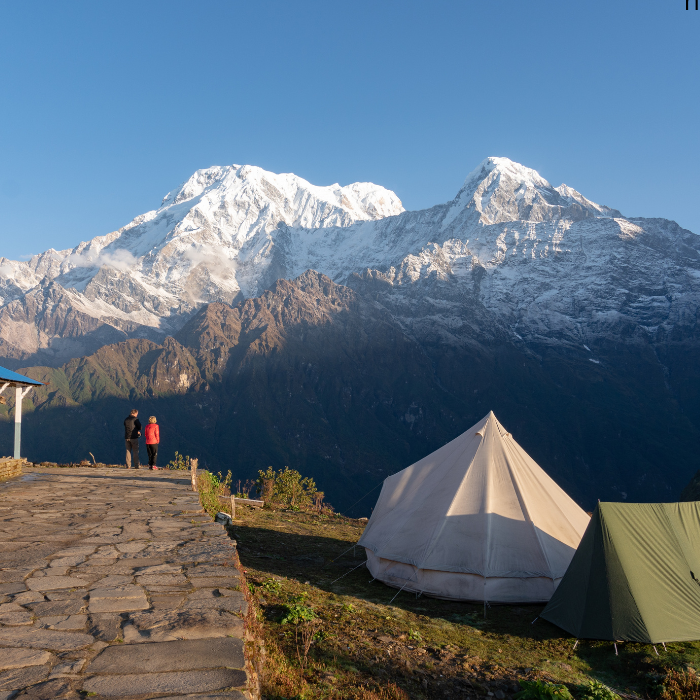
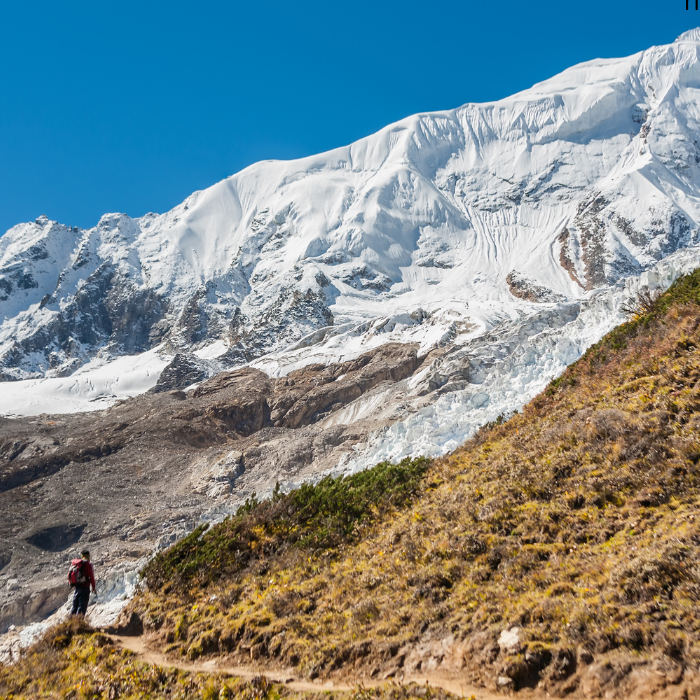


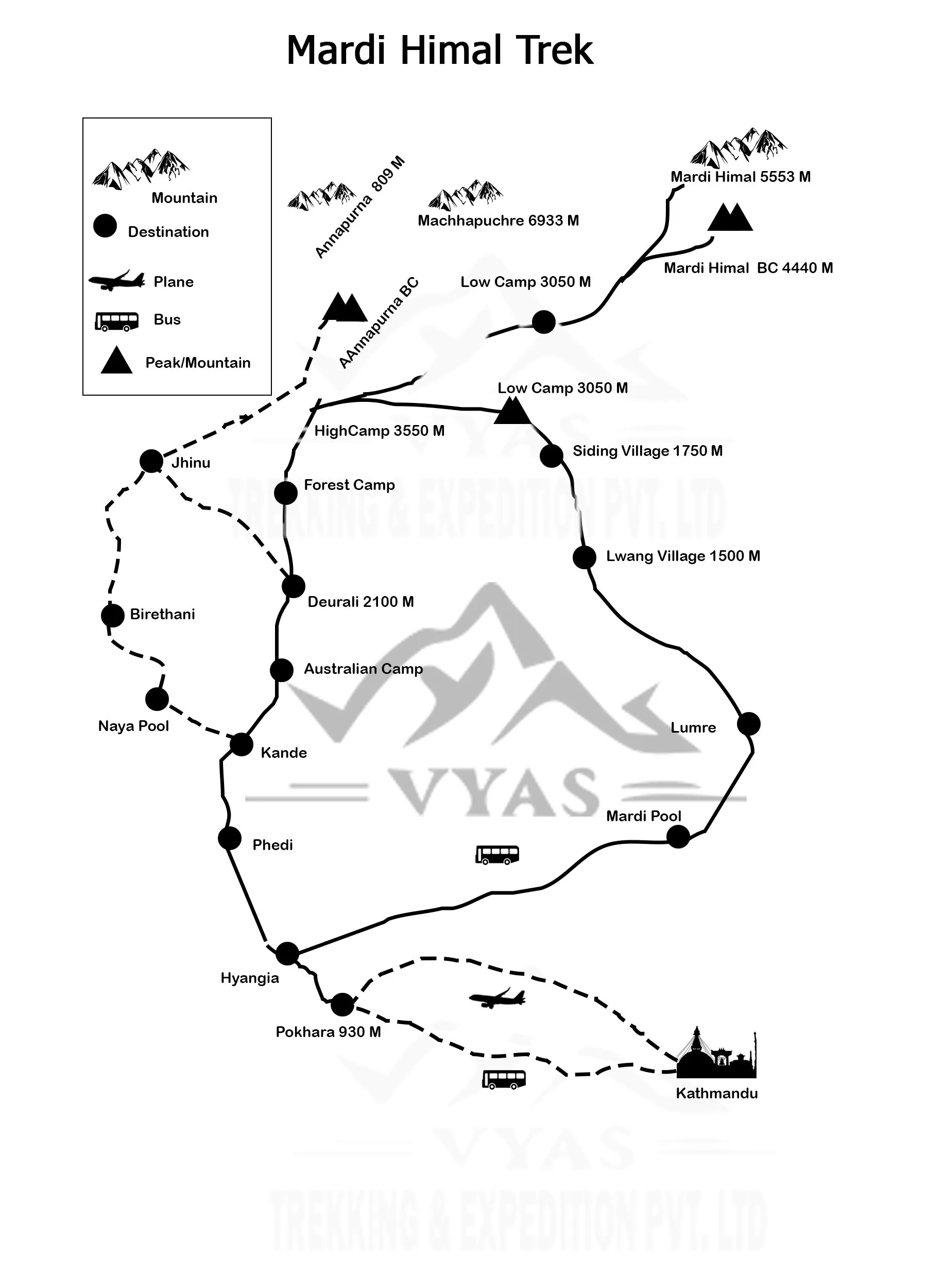






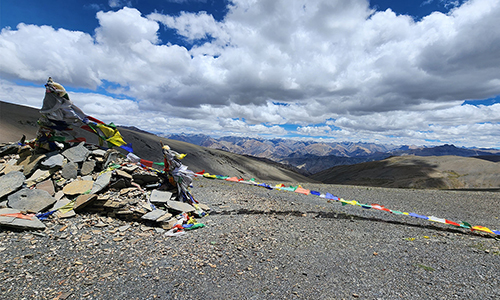

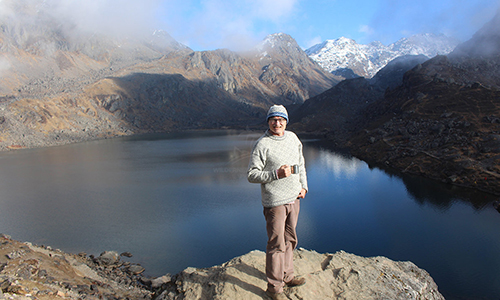


Lucas Meyer
2025-06-16 12:06:07
The Mardi Himal Trek with Vyas Treks Nepal was absolutely stunning! The trail was peaceful, with fewer crowds and amazing views of Machapuchare and the Annapurna range. Our guide was incredibly helpful and made the trek enjoyable and safe. The sunrise from High Camp was magical—totally worth the climb! I highly recommend this short and scenic trek for those looking for a less-traveled path in Nepal.